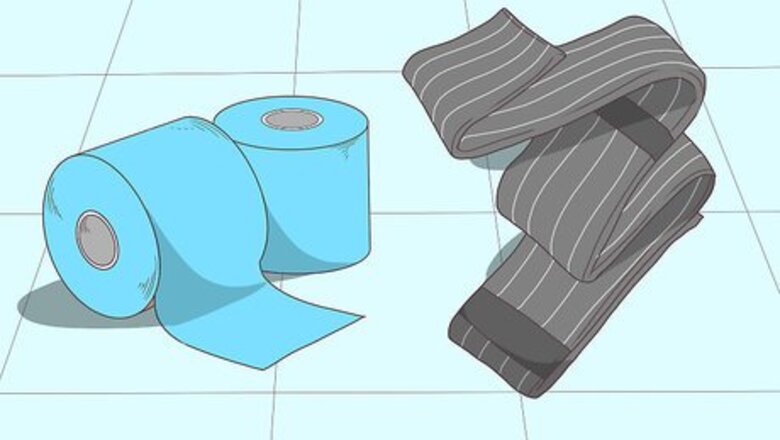
views
X
Research source
Applying Adhesive Athletic Tape
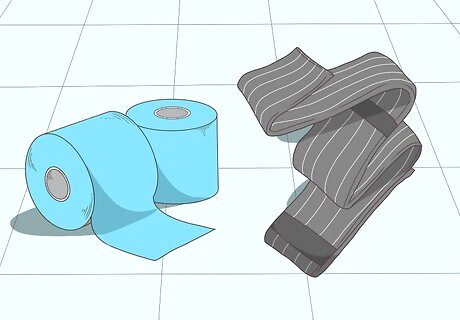
Choose between athletic wrapping, compression wrapping, or both. Since there are several ways to wrap an Achilles tendon, you need to decide between them based on your specific needs. In general, if you only have a minor injury to your Achilles, you are probably fine with just wrapping the Achilles in a compression bandage. If you have Achilles tendonitis or another painful condition, it may be necessary to use both athletic wrapping and a compression bandage. Both athletic tape and compression bandages can typically be found at pharmacies, big box stores, and from online retailers.

Get someone to help you. It's a good idea to have someone to assist you with taping and wrapping your Achilles tendon because it would be very awkward to do it yourself. Without an assistant it's improbable that you would be able to get a wrap on satisfactorily because you will need to apply tape to the back of your calf and ankle areas. The person that assists you does not need to have any special skills or knowledge of your injury. You can talk them through the process of taping and wrapping your Achilles.
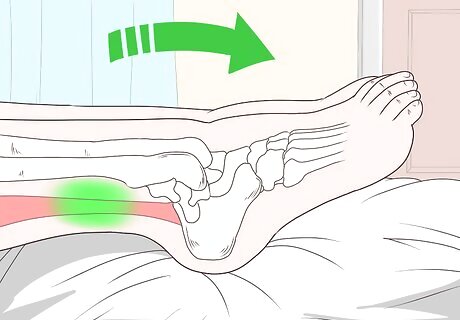
Position the foot so the tendon is relaxed. You don't want the tendon to be extended when you wrap it. This means that your foot should be slightly flexed, with all the pressure off the tendon. Typically, it's easiest to get in this position by laying on a table or bed face down with your feet hanging off the end. In this position, your feet will naturally fall into the correct position.
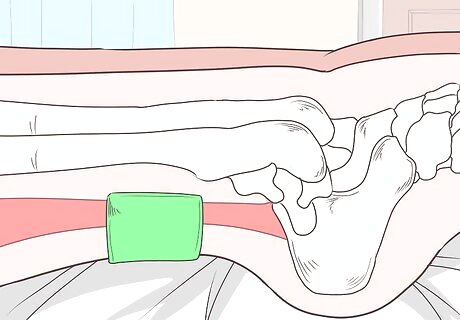
Cover the tendon in a protective pad. Get a non-stick bandage pad or a friction pad that doesn't have adhesive to cover the Achilles tendon area. Attach the pad with athletic tape or another bandage adhesive tape that you have available. This pad will help protect the area from friction when the Achilles moves under the athletic tape.
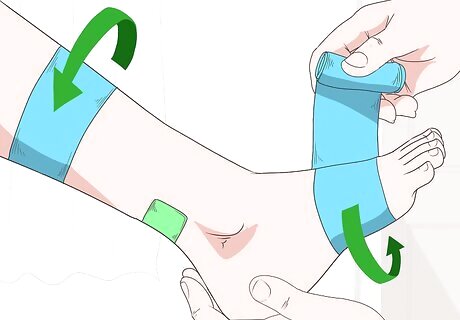
Apply anchor points above and below the tendon. Wrap adhesive athletic tape around the leg just above or below the widest part of the calf. Then also wrap around the foot at the arch. Give each of these areas a couple wraps around so that the tape is secure and will be able to have further athletic tape applied to the top of them. It's important to make sure that these wraps do not restrict blood flow. Don't put any tension on them as you apply them but also make sure that they are not loose.
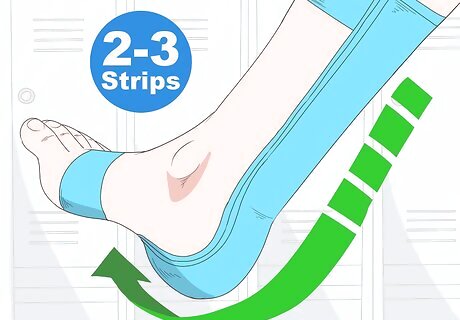
Run strips of the adhesive athletic tape between the anchor points. Start at the back of the calf and run the strips down vertically so they go from the calf anchor point, over the protective pad, and down onto the anchor point on the arch of the foot. Apply 2 or 3 of these strips. Make sure to keep your foot in the same position, which is not putting pressure on the Achilles, as you are applying these strips.
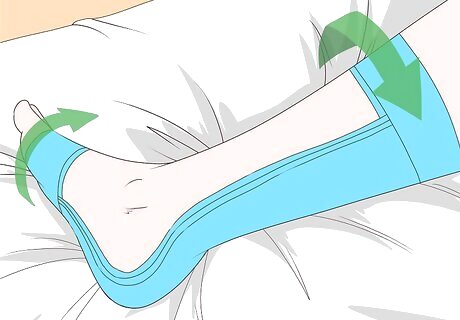
Wrap the anchor points again to secure the strips across the Achilles. Cover the contact points of the vertical strips so that they are held with tape on the inside and the outside. This will help ensure that they won't move even when the ankle is flexed. You can also wrap the middle of the strips around the ankle, so that the vertical strips sit flush with the leg. When these strips are secure, they should take the brunt of the pressure when you step and flex your foot, minimizing the pressure put on the Achilles.
Wrapping the Area in a Compression Bandage
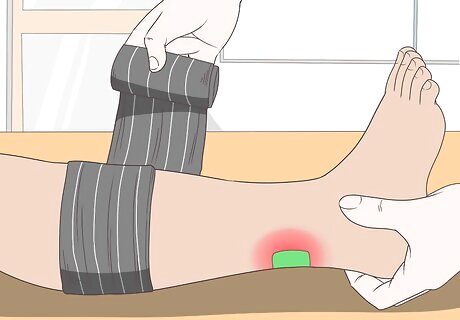
Start wrapping above the ankle. When applying compression to an injured Achilles tendon it's a good idea to start wrapping above the injured area. Place the end of the bandage against the skin and then wrap the bandage around it several times to keep it in place. You want the bandage to be medium tight. This means that it is tight enough to stay in place while not cutting off the circulation.
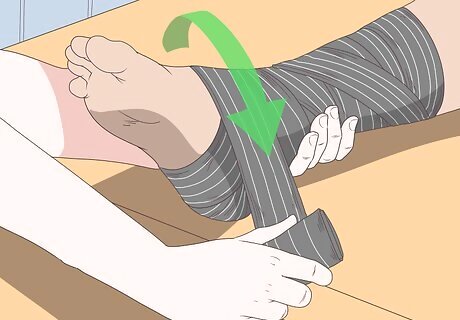
Wrap from the toes to the top of the ankle. Work your way down from the ankle. When you get to the heel start wrapping around the arch of the foot and down to the toes. It may be that that very corner of your heel is still exposed after your first pass. Then wrap back up the foot and the ankle, making sure to cover areas that have not yet been covered. Keep a small amount of tension on the bandage as you go. This will keep your wraps neat but will not put too much restriction on your circulation.
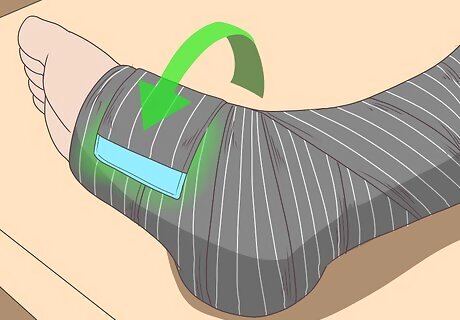
Secure the wrap. Once you have used up all of your bandage, it needs to be physically attached to itself. Many modern compression bandages come with Velcro on their ends, which will attach to the bandage when it is pressed on the surface. However, if yours doesn't have Velcro, you will need to use a safety pin to secure the end.
Combining Wrapping With Other Treatments
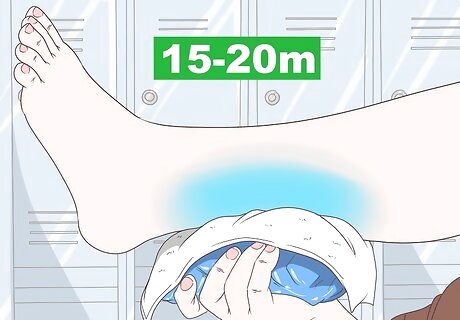
Ice the area for 15-20 minutes at a time, several times each day. Applying ice to an injured tendon can reduce inflammation and reduce swelling. Either use a store-bought ice pack, a frozen bag of veggies, or put some ice in a plastic bag. Wrap the ice pack in a thin towel to reduce the cold and apply it to the tendon. Keep the ice on for 15-20 minutes at most. Leave it off for at least an hour before reapplying it. Icing is most effective in the first 48 hours after an injury, but its effects will diminish after that. If you're hoping to alleviate swelling, use the ice as soon as possible after the injury occurs.
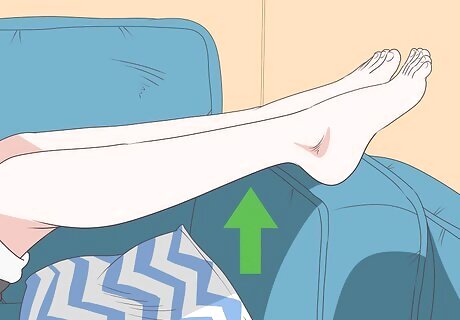
Elevate the area. Elevating an injury to the Achilles will help blood flow, which helps an injury heal faster, and will let excess fluid drain away from the injury. Simply lay down and elevate the injured area so it is above your heart. Try to get into this position whenever you are going to be in a sitting position. For instance, if you plan on watching TV, lay down in this position while you do it. Some easy ways to do this are to prop the leg up with a pillow or balance it on the arm of a couch while you lay down flat on the couch. Make sure that you don't put direct pressure onto your Achilles tendon.
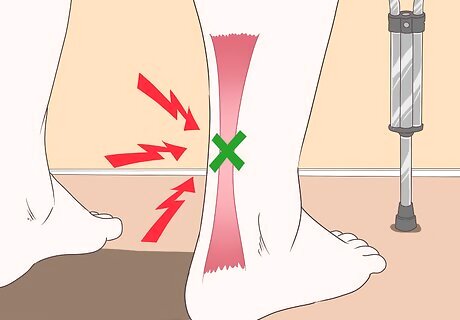
Avoid putting pressure on the tendon. Giving your tendon time to recover will allow the tiny tears in it to heal. For the first few hours after an injury, do not put any pressure on the tendon at all. After that, only put light pressure on your toes and keep the tendon relaxed while you step. To avoid putting any pressure on the area, you can also choose to walk with crutches or to use a knee walker or knee scooter. If you continue to try and stretch the tendon, it will extend the amount of time it takes for the tendon to heal.

Take anti-inflammatory medications if you are in pain. For most minor to moderate Achilles injuries over-the-counter painkillers will be enough to control the pain. Take the dose recommended on the packaging, being sure not to take more than is recommended in a 24 hour period. If an over-the-counter medication is not controlling the pain satisfactorily, talk to your doctor. They may prescribe you a stronger medication.


















Comments
0 comment